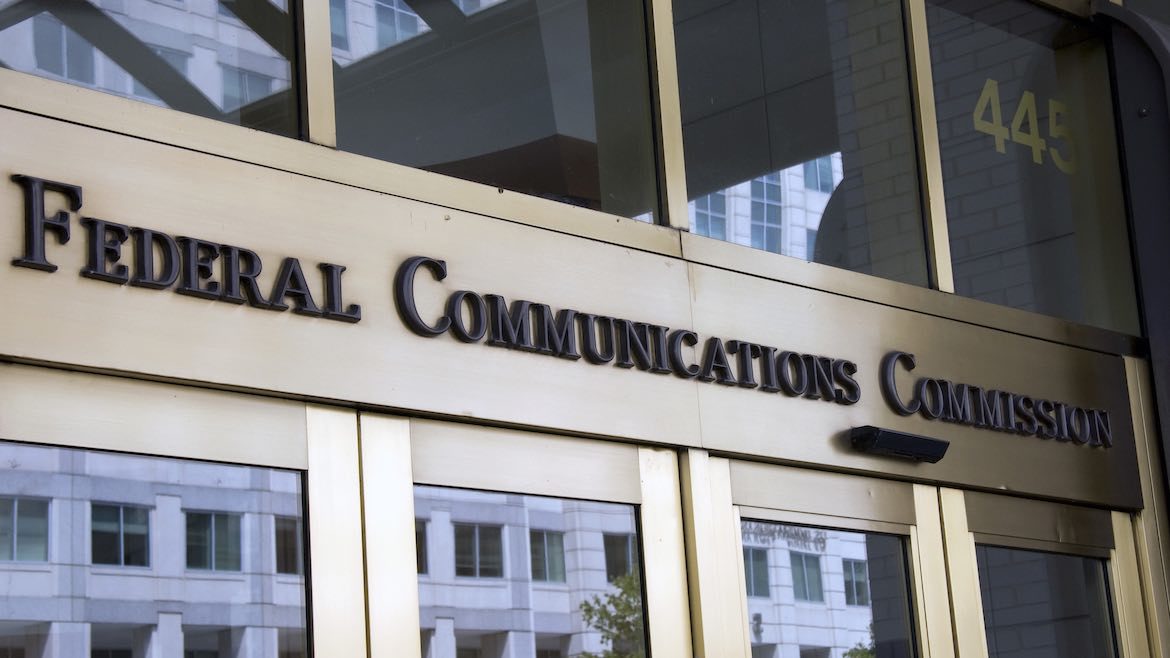Public TV advocates hail FCC ruling on ATSC 3.0

Mike Janssen / Current
In one of its final acts under outgoing chairman Ajit Pai, the FCC is giving noncommercial TV stations a break on several rules and fees, a move that public broadcasting advocates hope will lead to increased datacasting opportunities.
The FCC’s Report and Order was designed to update the commission’s rules to reflect the shift to ATSC 3.0, the “Next Gen TV” broadcast standard meant to transition TV from a one-way linear service to a more interactive, IP-based architecture. That means more use of what the FCC calls “ancillary and supplemental services” — using broadcast TV spectrum to transmit data instead of the linear video streams that have long been the primary focus of FCC TV regulation.
The latest iteration of the FCC’s rules still requires that public TV stations function as TV stations. “Our expectation,” the Report and Order says, “remains that the fundamental use of the [digital TV] license will be for the provision of free, over-the-air television service.”
But the increased data capacity of ATSC 3.0 raised questions about how to classify all the other things stations will be able to do with their spectrum. That’s why the FCC asked for comments about what constitutes a “primary” use of noncommercial TV stations’ bitstreams.
Several advocacy groups, including PBS, the Public Media Venture Group and America’s Public Television Stations, pushed for the FCC to expand the definitions it created in its last rule revision in 2001, when it first tried to account for datacasting as part of the transition from analog to ATSC 1.0. In its new revision of the rules, the FCC now includes datacasting along with broadcasting among the “primary” uses to which noncommercial stations must devote a “substantial majority” of their spectrum.
“It allows us to breathe a big sigh of relief and say now we can go forward and really strategize on services,” said APTS COO Lonna Thompson.
“This is an important step forward,” said consultant Vincent Curren, who worked with PMVG on its filings in the FCC proceeding. “Our view is that public TV stations in the near future are going to be offering more services that would be seen as traditional public TV programming, but delivered using ATSC 3 to set-top boxes and other novel delivery schemes.”
Including that “broadcast internet” delivery as part of public TV stations’ main missions is a big win for public TV, Curren says, because it will give stations the opportunity to better balance how they use their ATSC 3.0 bandwidth in a changing world. Instead of needing to devote a “substantial majority” of that bandwidth specifically to linear video, stations will have the flexibility to use most of their bandwidth for a mix of mission-driven linear video and broadcast internet services while still being able to use the remainder of their bandwidth for revenue-generating leased broadcast internet services.
Advocates for ATSC 3.0 offer a wide variety of potential services that could fit under the “educational mission” banner. On-demand video offerings, internet services to support remote learning, and datacasting for public safety are among the most obvious. The FCC’s Report and Order declined to put specific boundaries on the “mission” category, calling for further review as NextGen services develop in the marketplace.
“They just don’t have a good sense of how these broadcast internet services will play out in the NextGen world,” Thompson said. So the FCC is leaving the door open for an even broader interpretation that might include delivering precise agriculture data to farmers or automakers’ software updates to vehicles under the banner of “primarily educational use.”
Reduced fees on datacasting revenue
The FCC also delivered another win to public TV advocates: a reduction in the fees that noncommercial stations must pay on revenues they receive from making spectrum available for ancillary and supplemental services such as datacasting. The FCC reduced the fee to 2.5% of gross revenues instead of the 5% that commercial broadcasters must pay.
“The reduced rate is very nice,” Thompson said. “We had obviously sought a full exemption, but that was a compromise position and we appreciate the commission going there.”
No TV stations are making significant revenue yet from ancillary datacasting services, but Curren said that will change with more adoption of ATSC 3.0.
“Ten years down the road, that may be different. The reduction from 5% to 2.5% over the long term could be important,” he said, for public broadcasters who begin to make active use of the opportunity to lease their data capacity for outside services.
The FCC’s ruling also clarifies another issue broadcasters may encounter in the NextGen world: It agreed with PMVG’s contention that public TV stations can offer services such as pledge-free content or on-demand extras as a member benefit without having to count membership revenue as “ancillary and supplemental service” revenue that would be subject to the 2.5% or 5% fee level.
“The benefits they provide are considered to be equivalent to coffee mugs or tote bags,” Curren said.
Several public-interest groups had argued that the fees from ancillary and supplemental service revenue should not only be retained at 5% for all stations but should be set aside specifically to provide a fund to supply ATSC 3.0 receivers to consumers, in a program similar to the coupons for analog-to-digital converter boxes the government offered in 2009.
While this Report and Order deferred to Congress’ authority to create such a program, both Democratic commissioners’ concurring statements endorsed the concept.
Turning an FCC page
As Democrats prepare to take control of the commission, Curren said this rulemaking marks an important transitional point. It’s likely to be the last significant ATSC 3.0–related action from the Ajit Pai–led Trump-era FCC, leaving one more important NextGen TV proceeding to await the next administration.
“I think one of the things I would be watching in the next few months is what happens with the [single frequency network] rulemaking,” Curren said. That proceeding would expand stations’ ability to augment their signal coverage with small booster transmitters that operate on the same frequencies as the stations’ main signals, filling holes in the coverage areas already authorized by the FCC.
Without action from the Pai FCC, Curren and other advocates will be waiting to see whether the proceeding remains a priority in 2021, resolving the last big set of questions about how the transition to ATSC 3.0 will proceed.
“We have more certainty because of this rulemaking,” Curren said, “but we still have some uncertainty around how much flexibility the industry is going to have to build out SFNs.”
Even without a definite answer on SFNs, however, Curren emphasized that this rulemaking should provide stations with greater confidence in moving forward with plans to convert to ATSC 3.0 and roll out more of the on-demand and interactive services NextGen TV could provide.
“The transition is happening,” he said. “It’s happening now, and we think public TV stations need to be thinking creatively about how they’re going to get across that divide.”







Is internet service required to use ATSC 3.0?
Hi Randy — you won’t need internet to view channels broadcasting in ATSC 3.0, but you will need an internet connection to take advantage of some of the new features that it will enable.